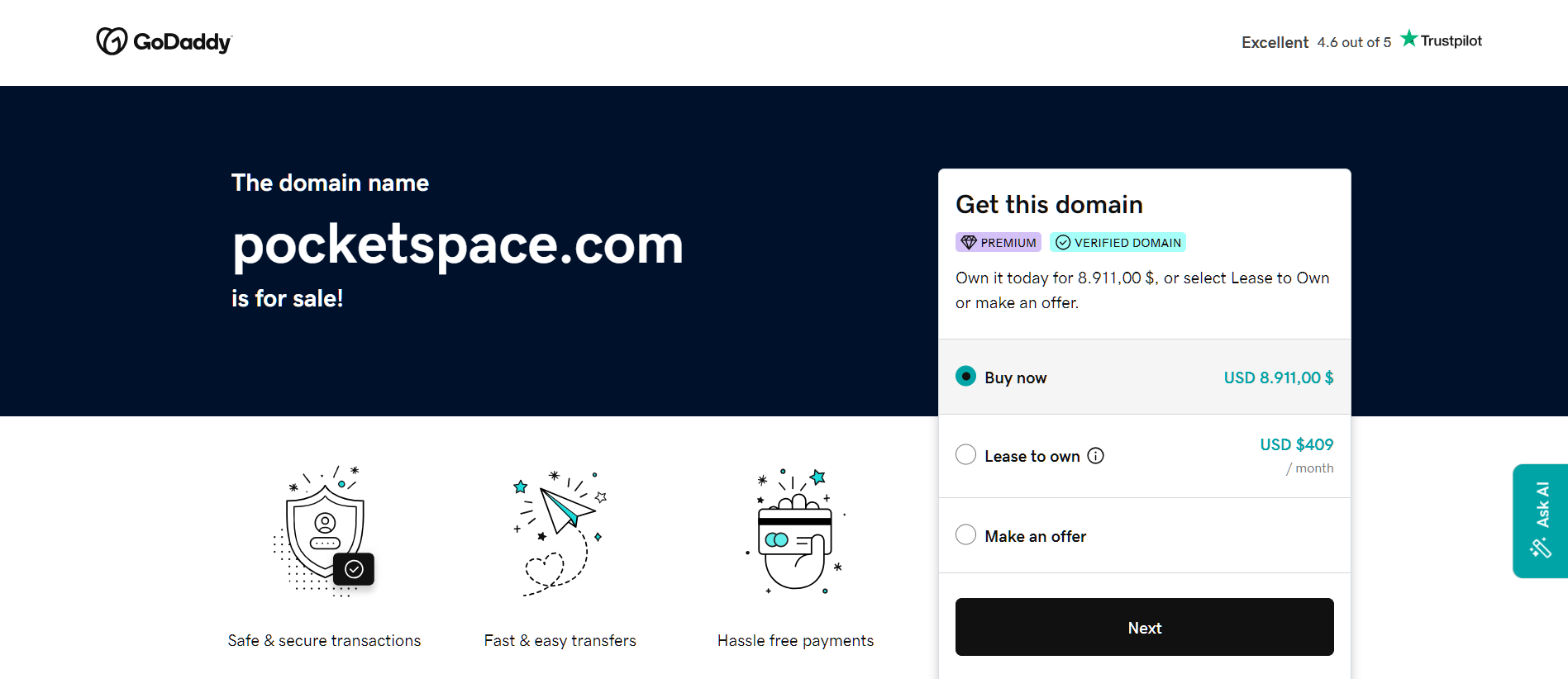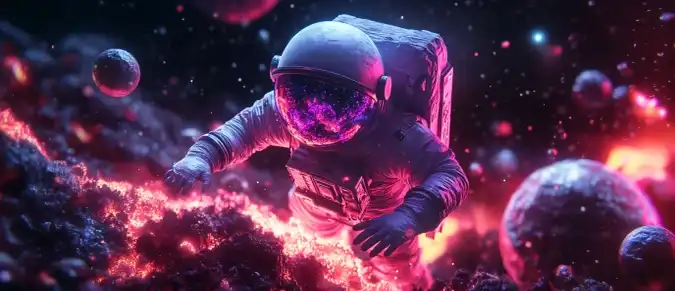Pocket Space is a mobile blockchain game in the idle-arcade format within the space fantasy genre, where players explore worlds, develop their own planets, create resources, and interact with a Play-to-Own economy. The project combines classic F2P gameplay with digital asset ownership, using NFT planets, in-game currency, and Web3 infrastructure. Through integration with the Hexacore ecosystem and the AGO platform, the game forms a sustainable economy focused on the long-term value of game assets rather than short-term P2E models.
- Pocket Space — concept and Play-to-Own
- Pocket Space gameplay: idle-arcade, building, combat
- Tokens, NFT planets and the Pocket Space economy
- Hexacore ecosystem, AGO and Web3 infrastructure
- Community, roadmap and project prospects

Pocket Space — concept and Play-to-Own
Pocket Space represents a new type of mobile Web3 project, where open-world exploration mechanics are combined with on-chain asset ownership. Players start without any initial cost: there is no need to buy NFT or stake tokens, making the game accessible even to newcomers unfamiliar with crypto. At early stages, Pocket Space follows classic F2P logic: exploration, crafting, quests, and character progression.
The essence of Play-to-Own appears as the player advances — key game objects become NFT assets that can be owned, traded, and used in smart contracts. Planets vary in type, rarity, and resource composition. The economy is structured so that asset value grows through their uniqueness, limited supply, and demand from players seeking in-game advantages.
The game structure reflects the market's shift from traditional Play-to-Earn schemes to models where digital ownership forms the core experience. Pocket Space focuses on player retention through gameplay rather than daily payouts, which distinguishes it from most first-generation GameFi titles.
Pocket Space gameplay: idle-arcade, building, combat
The gameplay of Pocket Space revolves around exploration and resource gathering across different planets. The player controls a character who gradually unlocks new areas, upgrades equipment, and expands their own base. The game mixes idle arcade elements with active action mechanics, creating a dynamic but not overwhelming experience. Core gameplay features include:
• Resource gathering. The player collects wood, ore, minerals, crystals, and other materials.
• Crafting items. Creating weapons, tools, and modifications to enhance the character.
• Building and expanding the planet. Constructing structures, processing materials, and forming a personal base.
• PvE dungeons. Fighting monsters, searching for rare resources, participating in timed missions.
• PvP arena and “black zones”. Competitive battles where winners earn valuable rewards.
• Visiting other players' planets. The ability to temporarily extract resources from others, creating economic competition.
These mechanics represent the core loop, but each has long-term progression. Crafting requires recipes, dungeons have difficulty tiers, and PvP introduces seasonal rankings. This keeps the game engaging for both casual players and advanced users accustomed to deep progression systems.
Tokens, NFT planets and the Pocket Space economy
The Pocket Space economy is based on on-chain ownership and scarcity of digital assets. NFT planets form the core of the system — unique game objects with specific landscapes, rarity levels, resources, and development potential. Alongside them, the game uses an internal currency and Hexacore ecosystem tokens.
Below is a generalized structure of the on-chain economy:
| Element | Description | Function in the game |
|---|---|---|
| NFT planets | Unique game objects generated in limited amounts | Resource farming, trading, base development, asset ownership |
| In-game currency | A resource obtained through gameplay | Upgrading buildings, purchasing recipes, crafting items |
| HXC/PST ecosystem tokens | Hexacore tokens tied to airdrops and Web3 functionality | Access to events, AGO participation, trading on the marketplace |
| NFT items and equipment | Rare items crafted or obtained as drops | Strengthening the character, advancing in PvE and PvP |
This table shows the core elements of the digital economy, each with a clearly defined function. Such a structure prevents inflation typical for early P2E games and makes Pocket Space more sustainable. The primary source of value is not token emission, but scarcity and demand for planets and items within the community.
Hexacore ecosystem, AGO and Web3 infrastructure
Pocket Space is part of the broader Web3 ecosystem of Hexacore, a publisher behind dozens of successful mobile games. The project became a key title using the AGO (Asset Generation Offering) infrastructure — a UGC platform where players and artists can create 3D models, turn them into NFT, and use them within Hexacore games.
AGO focuses on generating assets through AI and enabling their monetization. Pocket Space serves as a showcase for the platform: assets can be added into the game, listed on the marketplace, and used in gameplay modes.
The ecosystem is complemented by the Web3 Hub, which unifies authentication, marketplace features, inventory, tokens, and airdrop systems. Through the Hub, players can manage NFT, buy items, link wallets, and access Web3 activities.
This infrastructure creates a long-term foundation for Pocket Space, making it not a standalone game but part of a larger platform where assets can move between products without losing value.
Community, roadmap and project prospects
The Pocket Space community has been growing since early development stages: alpha tests, tournaments, events, and seasonal test cycles have been launched to improve balance and expand mechanics. Players already participate in cross-platform missions connected to airdrops and in-game progression.
The roadmap includes expansion of Web3 Hub, a global app release, integration of AGO UGC assets, improvement of PvP modes, and development of a seasonal progression model. The team aims to make Pocket Space the central title of the Hexacore ecosystem, enabling collaborations, partnerships, and joint events.
The project’s prospects rely on the balance between F2P gameplay and NFT asset value. If the developers maintain stability and integrate Web3 mechanics smoothly, Pocket Space may become one of the most successful mobile crypto games aimed at a mass audience.




